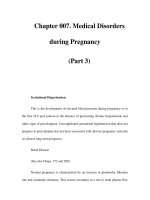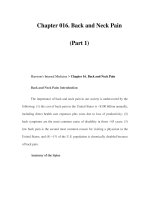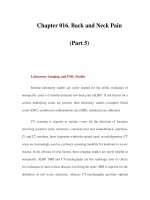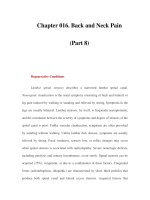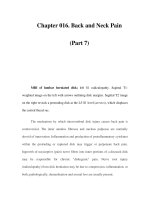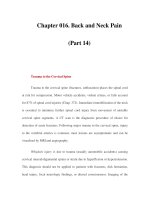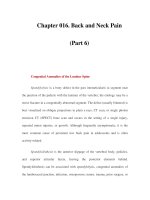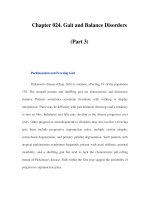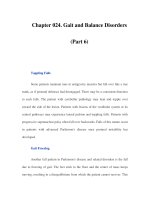Chapter 072. Malnutrition and Nutritional Assessment (Part 3) pps
Bạn đang xem bản rút gọn của tài liệu. Xem và tải ngay bản đầy đủ của tài liệu tại đây (16.11 KB, 5 trang )
Chapter 072. Malnutrition and
Nutritional Assessment
(Part 3)
Physiologic Characteristics of Hypometabolic and Hypermetabolic
States
The metabolic characteristics and nutritional needs of hypermetabolic
patients who are stressed from injury, infection, or chronic inflammatory illness
differ from those of hypometabolic patients who are unstressed but chronically
starved. In both cases, nutritional support is important, but misjudgments in
selecting the appropriate approach may have disastrous consequences.
The hypometabolic patient is typified by the relatively unstressed but
mildly catabolic and chronically starved individual who, with time, will develop
marasmus. The hypermetabolic patient stressed from injury or infection is
catabolic (experiencing rapid breakdown of body mass) and is at high risk for
developing kwashiorkor, if nutritional needs are not met and/or the illness does not
resolve quickly. As summarized in Table 72-2, the two states are distinguished by
differing perturbations of metabolic rate, rates of protein breakdown (proteolysis),
and rates of gluconeogenesis. These differences are mediated by proinflammatory
cytokines and counterregulatory hormones—tumor necrosis factor, interleukins 1
and 6, C-reactive protein, catecholamines (epinephrine and norepinephrine),
glucagon, and cortisol—that are relatively reduced in hypometabolic patients and
increased in hypermetabolic patients. Although insulin levels are also elevated in
stressed patients, insulin resistance in the target tissues prevents insulin-mediated
anabolic actions.
Table 72-2 Physiologic Characteristics of Hypometabolic and
Hypermetabolic States
Physiologic
Characteristics
Hypometabolic,
Nonstressed Patient
(Cachectic, Marasmic)
Hypermetabolic,
Stressed Patient
(Kwashiorkor Risk
a
)
Cytokines,
Physiologic
Characteristics
Hypometabolic,
Nonstressed Patient
(Cachectic, Marasmic)
Hypermetabolic,
Stressed Patient
(Kwashiorkor Risk
a
)
catecholamines,
glucagon, cortisol,
insulin
Metabolic rate,
O
2
consumption
Proteolysis,
gluconeogenesis
Ureagenesis,
urea excretion
Physiologic
Characteristics
Hypometabolic,
Nonstressed Patient
(Cachectic, Marasmic)
Hypermetabolic,
Stressed Patient
(Kwashiorkor Risk
a
)
Fat catabolism,
fatty acid utilization
Adaptation to
starvation
Normal Abnormal
a
These changes characterize the stressed, kwashiorkor-risk patient seen in
developed countries; they differ in some respects from the characteristics of
primary kwashiorkor seen in developing countries.
Metabolic Rate
In starvation and semistarvation, the resting metabolic rate falls between
10% and 30% as an adaptive response to energy restriction, slowing the rate of
weight loss. By contrast, resting metabolic rate rises in the presence of physiologic
stress in proportion to the degree of the insult. It may increase by about 10% after
elective surgery, 20–30% after bone fractures, 30–60% with severe infections such
as peritonitis or gram-negative septicemia, and as much as 110% after major
burns.
If the metabolic rate (energy requirement) is not matched by energy intake,
weight loss results—slowly in hypometabolism and quickly in hypermetabolism.
Losses of up to 10% of body weight are unlikely to be detrimental; however,
losses greater than this in acutely ill hypermetabolic patients may be associated
with rapid deterioration in body function.
